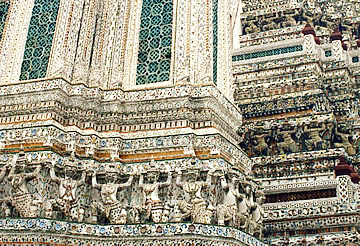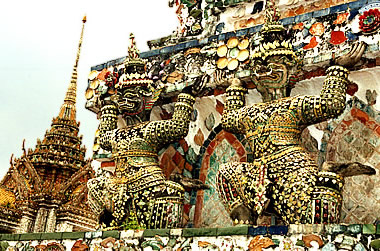

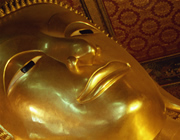
Bangkok is full of wonderful golden temples with amazing Buddha statues.
Related pages: Bangkok
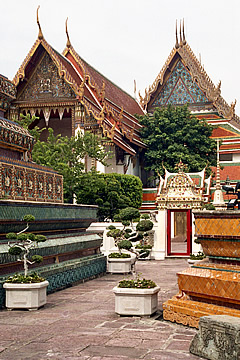
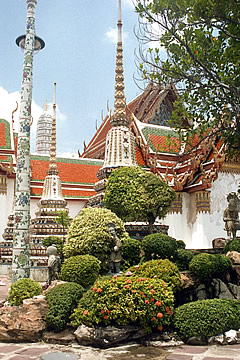
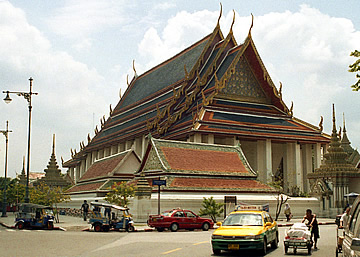
This is the oldest and largest temple (wat) complex in Thailand. Its most impressive single attraction is the Reclining Buddha, and we made two visits to really explore.
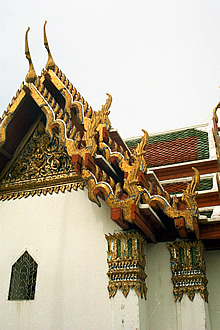
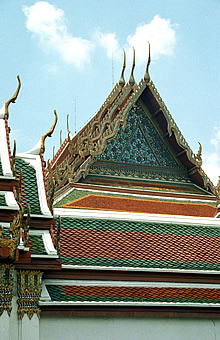
Although it dates back to the sixteenth century the monastery was completely rebuilt in 1781.
The complex is divided into two walled areas by a road. The north complex has temple buildings and the reclining Buddha while the south is a working monastery.
Rama III wanted the monastery to be a centre of education and this ideal is obviously still being upheld if the number of schoolchildren visiting is anything to go by. We were politely asked several times if we would answer their questionnaires on our occupations, salaries, travelling experiences, etc.
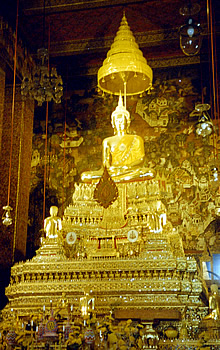
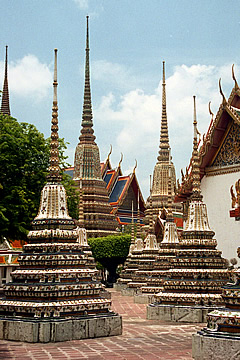
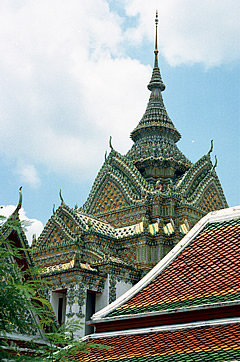
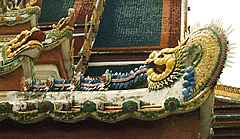
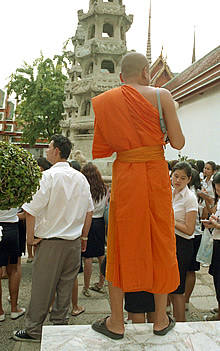
Apart from the magnificent reclining Buddha it contains 91 chedis which are pagoda-like monuments housing relics of the Buddha or revered teachers, or memorial shrines. It also has the largest collection of images of Buddha in Thailand - mostly behind glass.
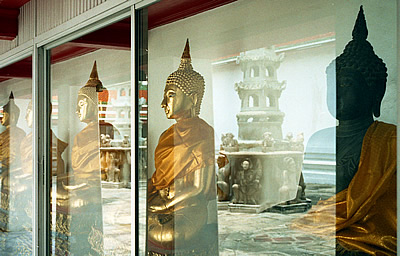
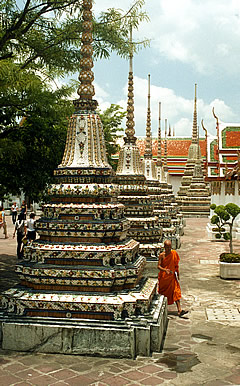
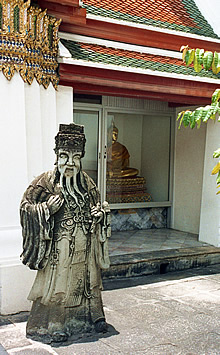
The colourful and exotic architecture, the ceramic decoration on the buildings, the beautiful plants and trees create a stunning scene. There are wonderful decorative details such as ceramic dragons on roof lines - in fact no roof line is left unadorned in some way.
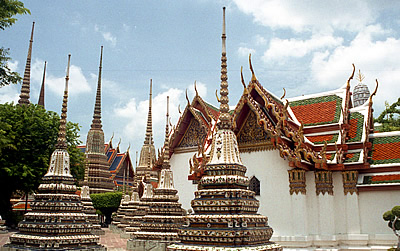
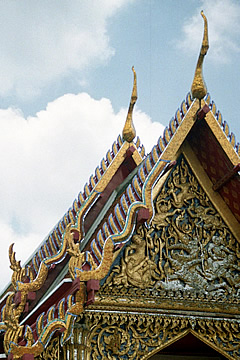
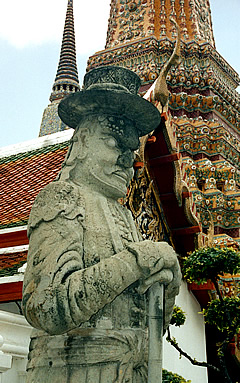
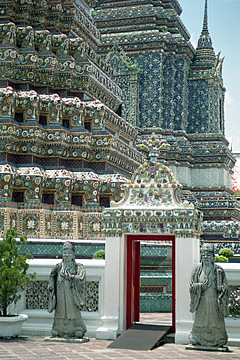
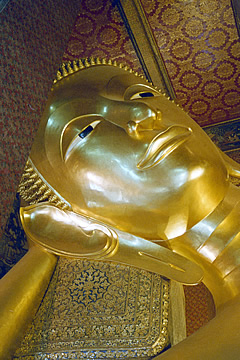
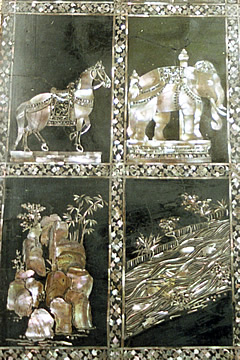
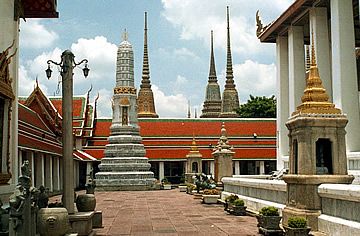
Some of the gable ends of the roofs have carved gilded figures depicting a scene, perhaps a sacred story.
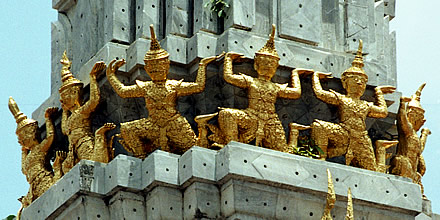
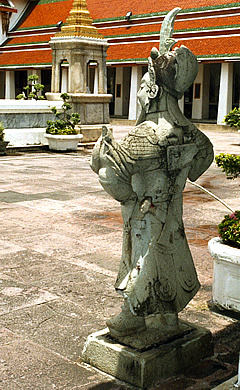
There are really wonderful stone statues usually at entrances to courtyards - guardians of the monastery; even on the backs of these there is great attention to detail.
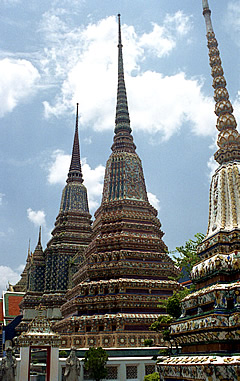
The enormous chedis (stupas) on either side of the entrance are smothered in wonderfully colourful ceramics.
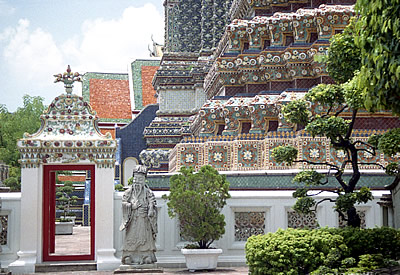
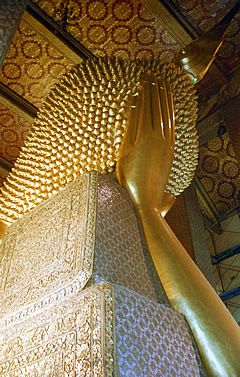
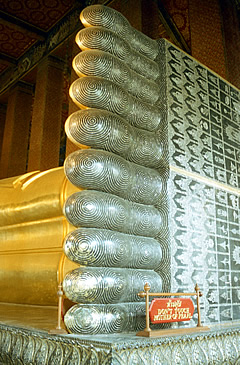
This beautiful Reclining Buddha was created in the nineteenth century during the reign of Rama III and represents the pose the Buddha adopted attaining nirvana.
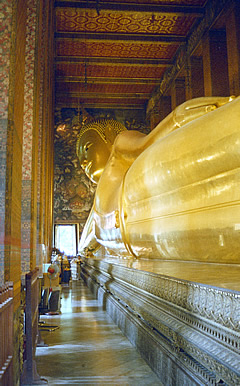
It is 46m long, 15m high and covered in gold leaf. It is truly amazing, very beautiful, the head and feet particularly so.
The eyes and feet are adorned with mother-of-pearl, the feet displaying 108 laksana - characteristics of Buddha.
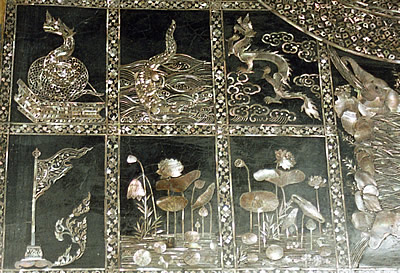
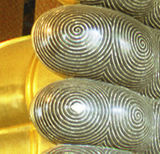
The toes are even decorated with "toe-prints" - beautiful symmetric whorls.
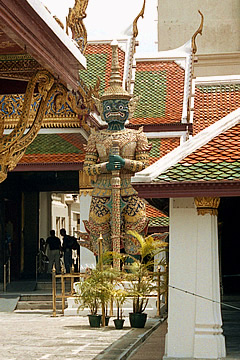
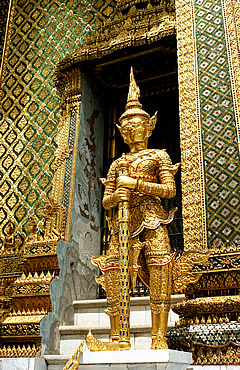
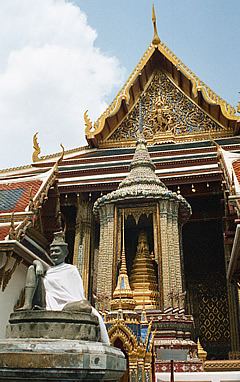
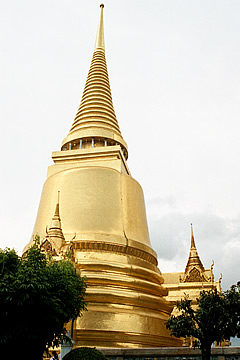
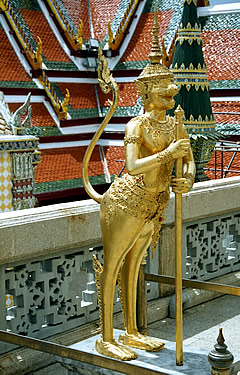
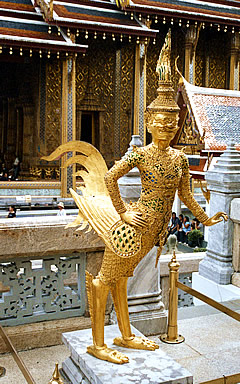
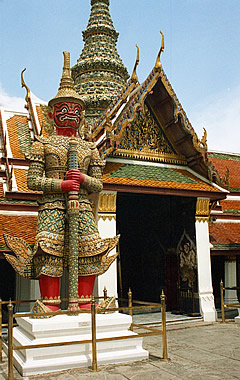
An enormous complex contains both the royal residence, government offices and the Temple of the Emerald Buddha.
The Emerald Buddha is actually made from a single block of green jade and only about 60cm high and set high above the floor of the temple. Photography is forbidden inside the temple. The Buddha's robe is changed three times a year by the King of Thailand: a diamond encrusted robe for the hot season, a solid gold robe for the cold season and a gilded monk's robe in the rainy season.
The Royal Palace is, apart from the roofs, much more European in appearance than the temple buildings. Though this area, too, has some beautiful buildings with richly decorated roofs, the supporting structures usually white walls or pillars. The royal residence and government buildings are not open to the public.
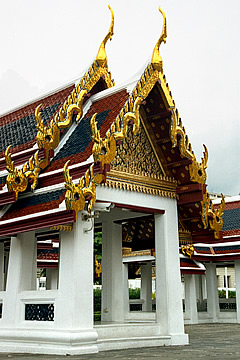
There are over 100 buildings in the complex which was built in 1782 when Rama I ascended to the throne. It covers 218,000 square meters so needs plenty of time to explore.
Practically the first thing to be seen at this most sacred of Thai temples, and impossible to miss, is the huge golden Phra Si Rattana Chedi on the upper terrace. Also here is the Mondop which holds sacred Buddhist scriptures inscribed on palm leaves and contained in a mother-of-pearl cabinet.
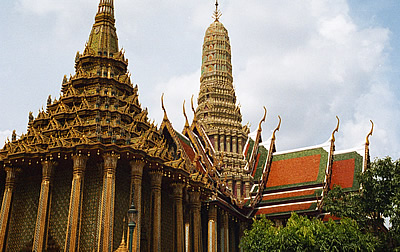
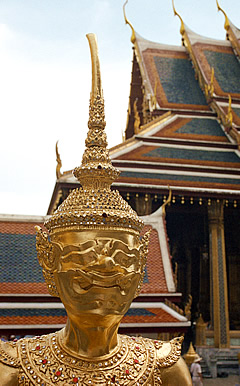
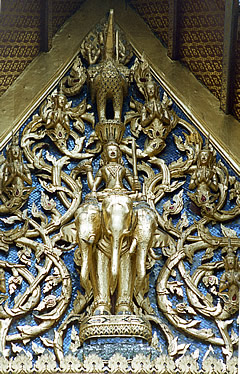
The Royal Pantheon is also located on the upper terrace - it houses statues of past kings of the ruling Chakri dynasty and is only open on April 6th, the anniversary of the founding of the dynasty.
Galleries around the Temple of the Emerald Buddha are painted with a fabulous sequence of murals depicting scenes from the Ramakien, the Thai version of the Indian Ramayama.
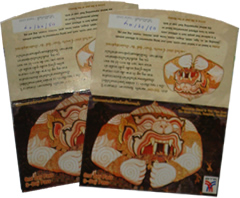
It is an epic story of an exiled prince. Rama, who, with the aid of his brother and the monkey god Hanuman, enlist the help of two monkey kings and their large armies to rescue Rama's wife Sita who had been kidnapped by a demon.
Originally painted in the reign of Rama I in 1783, the murals have undergone numerous restorations.
I was fascinated by the fantastic statues within this complex - these are of animals and demons, often very large and usually acting as guards at entrances and exits, and mythological creatures, many completely gilded.
There are also lots of statues and other representations of elephants here. These are said to represent the white elephants acquired by the kings of Thailand.
Elephants traditionally work with the Thai people on farms and logging and have been an important mode of transport. Increasing urbanisation has had a big impact on this way of life, however, and the number of elephants has reduced dramatically. When logging was banned in 1989 mahouts began to appear with their elephants in Bangkok, looking for ways to earn a living. Cities are not, of course, great places for elephants to live.
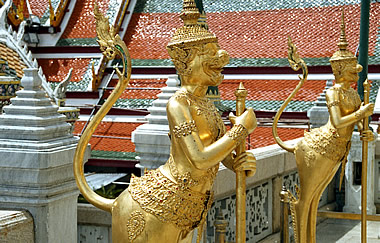
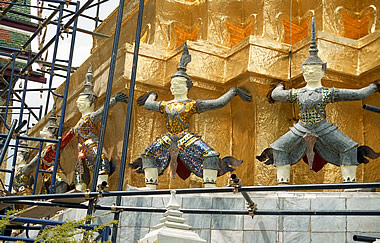
3 July 2009: a possible solution to the problem is elephant adoption - half of the city's elephants have been relocated to a countryside reserve which is great news for the animals. News Story
The temple buildings were in the final stages of restoration when we visited so everything was pristine, glittering and very brightly coloured.
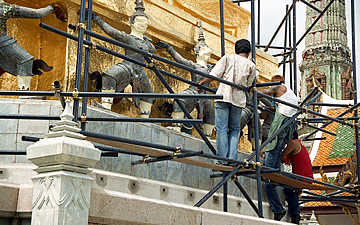
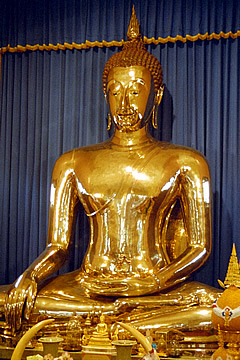
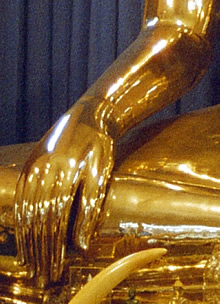
Walking away from the bustle of Chinatown's market streets, down roads lined with shops selling gold, one comes to Wat Traimit. It's a very appropriate location for the impressive major attraction at this temple: the 5.5m solid gold Buddha - said to be the largest golden Buddha image in the world. It was made in the Sukhothai style in the thirteenth century - Sukhothai was a northern Thai kingdom which existed for about 200 years from 1238. The Buddha is in the mara conquering attitude, a typical style at the time of the Sukhothai kingdom.
The Buddha was later covered in stucco to protect it from eighteenth century invaders.
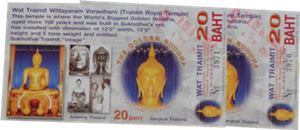
The gold Buddha was only rediscovered in1955 when being moved to a new building - either by workmen seeing gold beneath cracks in the stucco or it being dropped!
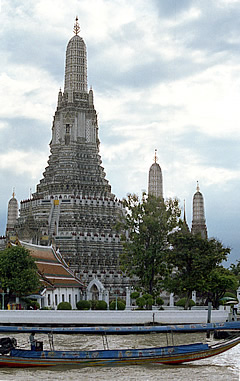
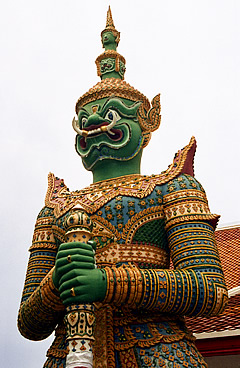
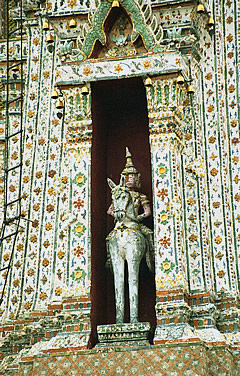
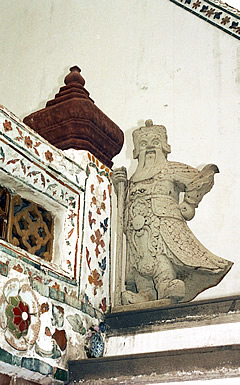
Wat Arun is named for Aruna, the god of dawn. It is on the Thonburi side of the river and close to the river's edge and its central tall prang (Khmer style tower) catches the early morning light. Rama II and Rama III reconstructed and enlarged the wat from the original 17th century temple of King Taksin.
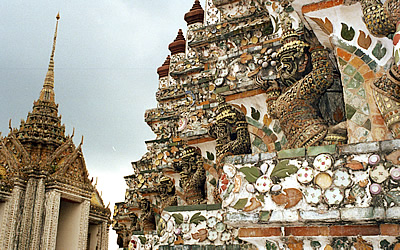
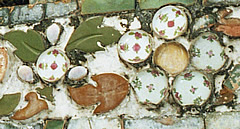
The temple is covered with colourful pieces of porcelain which was used as ballast by ships coming to Bangkok from China. Much of the porcelain is broken but the effect is still very colourful.
The Emerald Buddha was housed here before being moved to Wat Phra Kaeo on the other side of the river.
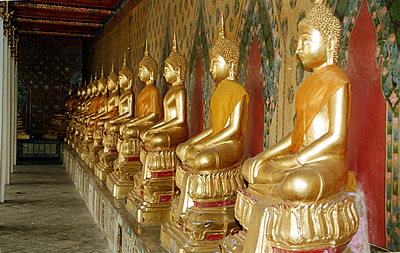
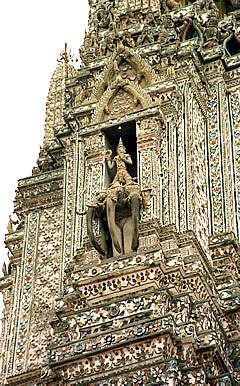
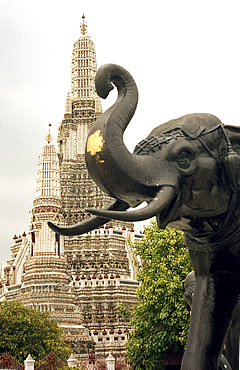
It's a vertiginous edifice with statues high up in niches and the lower levels defended by fierce demons and dwarf-like guardians.
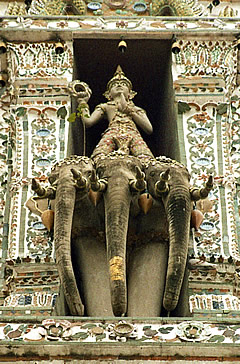
The Phra Prang - the large central prang - has wonderful statues of the god Indra on his three-headed elephant Erawan.
